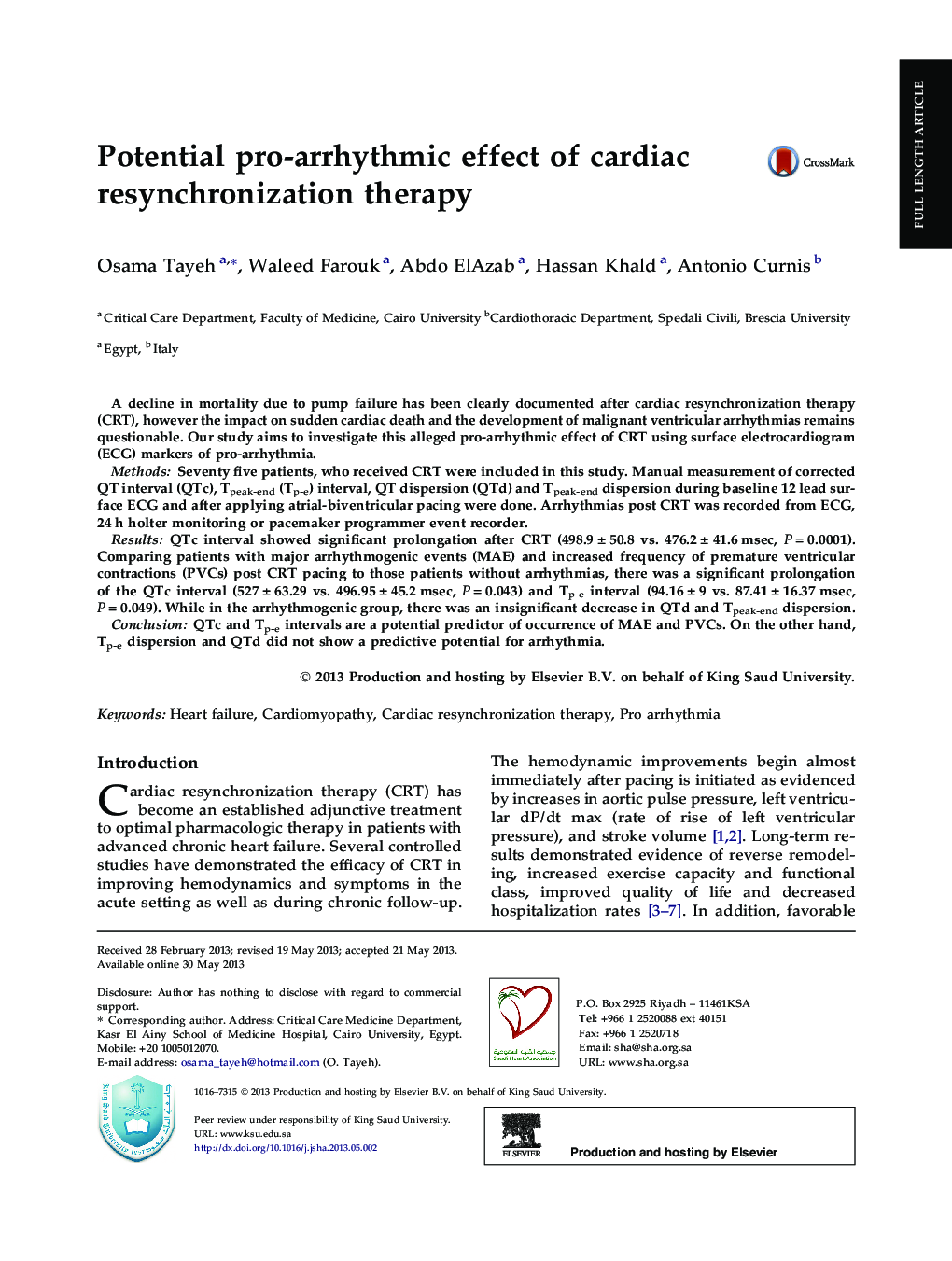| Article ID | Journal | Published Year | Pages | File Type |
|---|---|---|---|---|
| 2978153 | Journal of the Saudi Heart Association | 2013 | 9 Pages |
A decline in mortality due to pump failure has been clearly documented after cardiac resynchronization therapy (CRT), however the impact on sudden cardiac death and the development of malignant ventricular arrhythmias remains questionable. Our study aims to investigate this alleged pro-arrhythmic effect of CRT using surface electrocardiogram (ECG) markers of pro-arrhythmia.MethodsSeventy five patients, who received CRT were included in this study. Manual measurement of corrected QT interval (QTc), Tpeak-end (Tp-e) interval, QT dispersion (QTd) and Tpeak-end dispersion during baseline 12 lead surface ECG and after applying atrial-biventricular pacing were done. Arrhythmias post CRT was recorded from ECG, 24 h holter monitoring or pacemaker programmer event recorder.ResultsQTc interval showed significant prolongation after CRT (498.9 ± 50.8 vs. 476.2 ± 41.6 msec, P = 0.0001). Comparing patients with major arrhythmogenic events (MAE) and increased frequency of premature ventricular contractions (PVCs) post CRT pacing to those patients without arrhythmias, there was a significant prolongation of the QTc interval (527 ± 63.29 vs. 496.95 ± 45.2 msec, P = 0.043) and Tp-e interval (94.16 ± 9 vs. 87.41 ± 16.37 msec, P = 0.049). While in the arrhythmogenic group, there was an insignificant decrease in QTd and Tpeak-end dispersion.ConclusionQTc and Tp-e intervals are a potential predictor of occurrence of MAE and PVCs. On the other hand, Tp-e dispersion and QTd did not show a predictive potential for arrhythmia.
